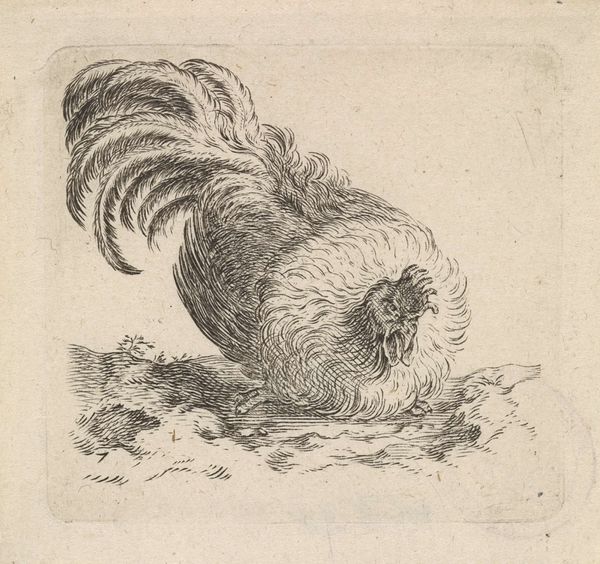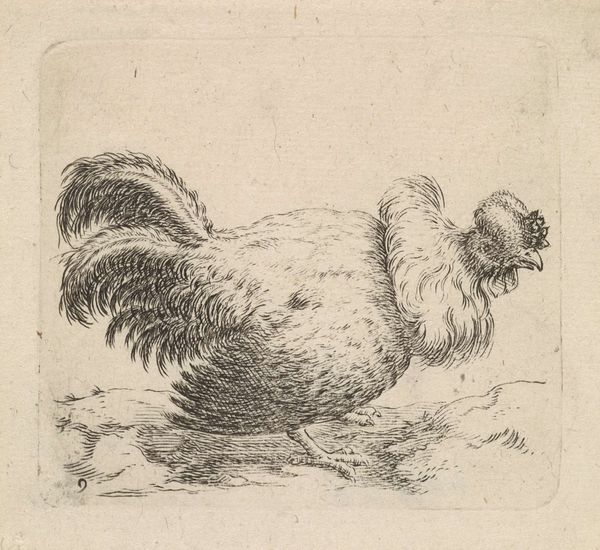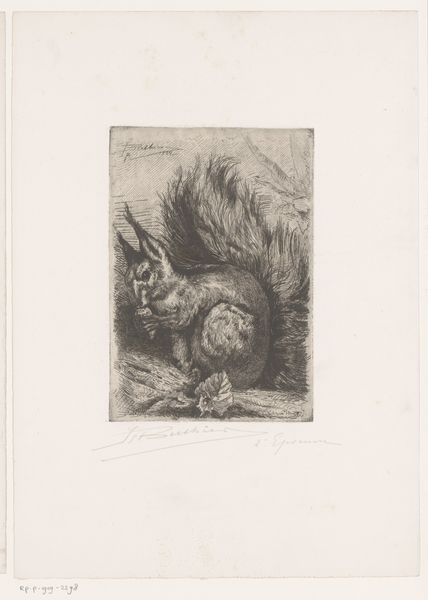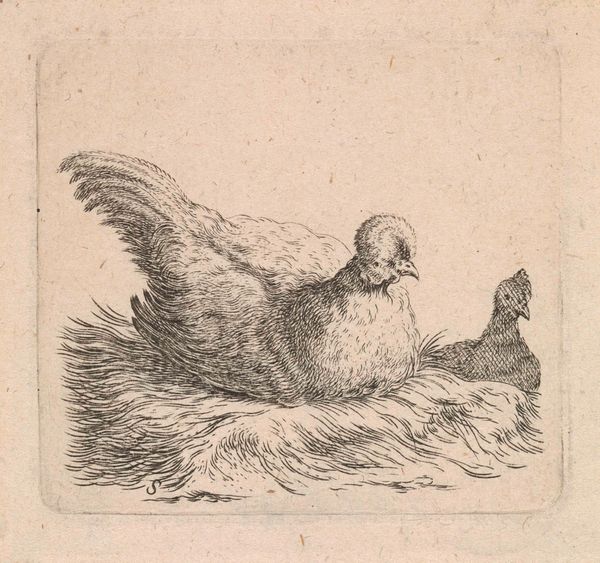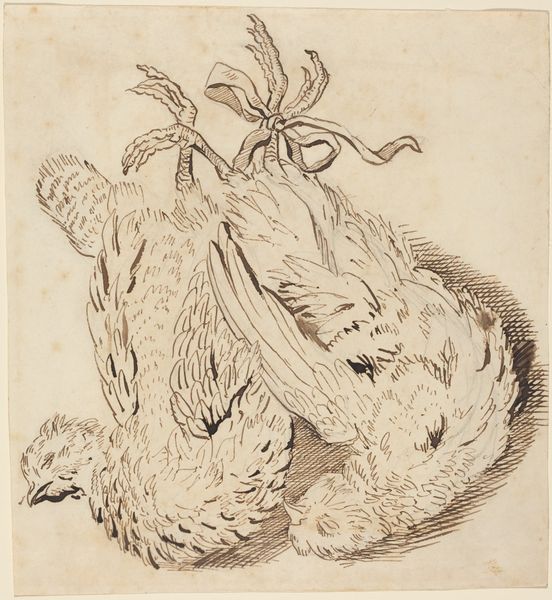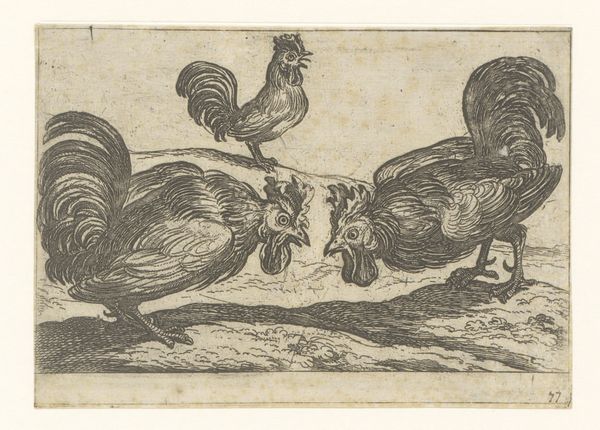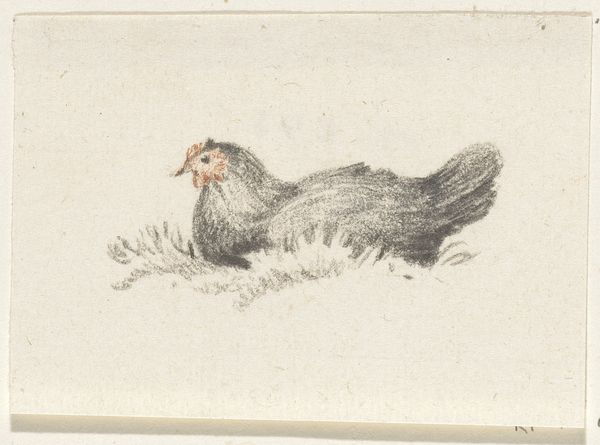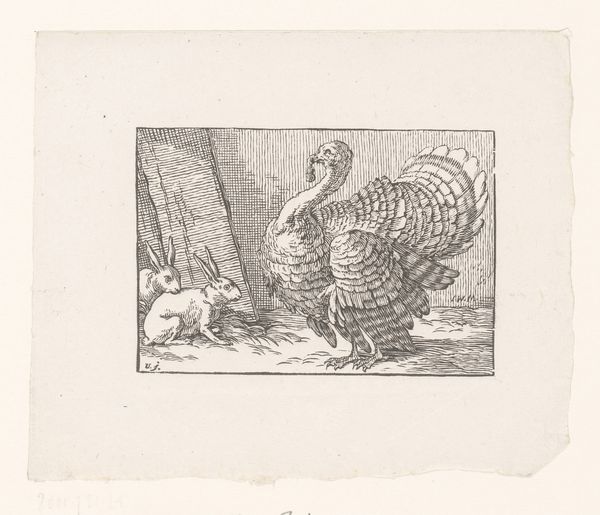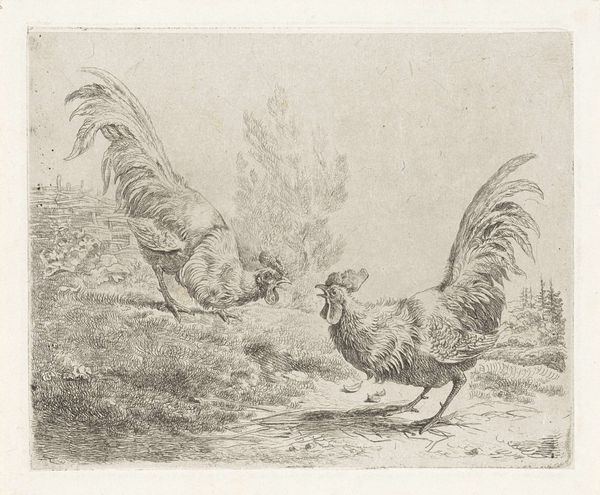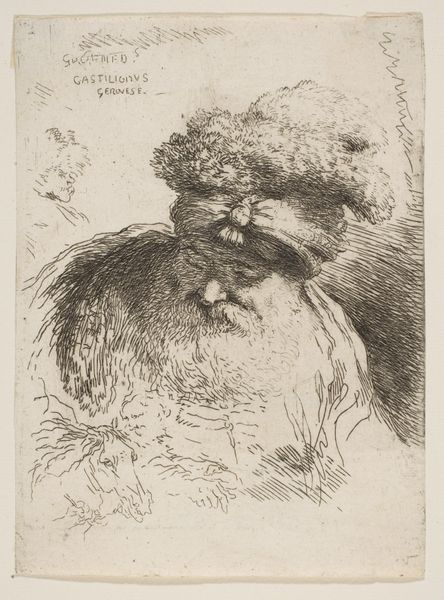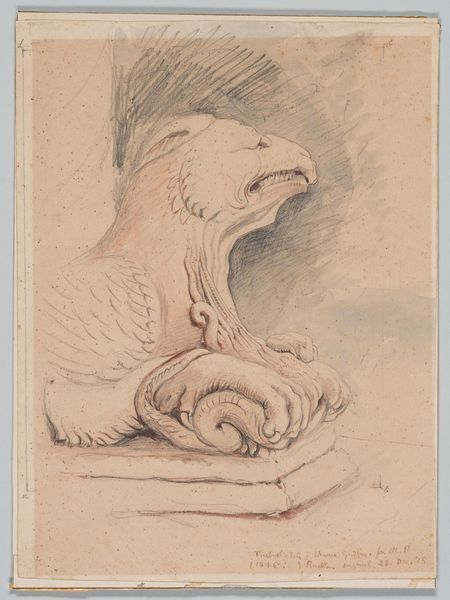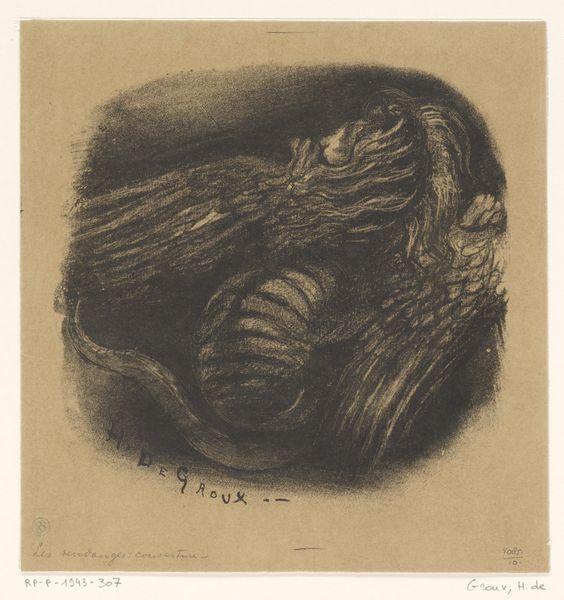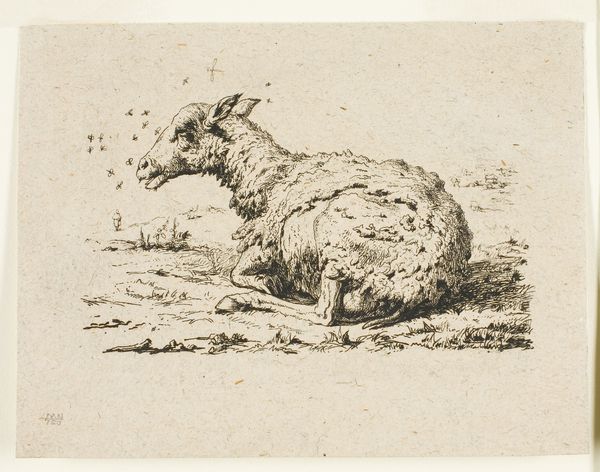
etching, engraving
#
animal
#
dutch-golden-age
#
etching
#
genre-painting
#
engraving
#
realism
Dimensions: height 76 mm, width 82 mm
Copyright: Rijks Museum: Open Domain
Cornelis Saftleven created this etching of a seated rooster sometime in the mid-17th century. Saftleven worked during the Dutch Golden Age, a time of immense economic and cultural growth in the Netherlands, but also one defined by strict social hierarchies and religious norms. Best known for his paintings of peasant life and animal imagery, Saftleven’s choices reflect the period’s fascination with the natural world, but also its rigid class structure. During this time, animal allegories were common, often used to mock or critique human behaviors. In "Zittende Haan" the rooster appears withdrawn, its head bowed as if in shame or exhaustion. Considered within the context of 17th century Dutch society, the image of the downcast rooster could be interpreted in many ways. Is Saftleven commenting on social inequality, perhaps using the rooster as a symbol of the oppressed? Or is this simply an image that reflects the period’s complex relationship with nature? This small print encourages us to reflect on the ways in which animals can reflect the emotional and social realities of human existence.
Comments
No comments
Be the first to comment and join the conversation on the ultimate creative platform.
